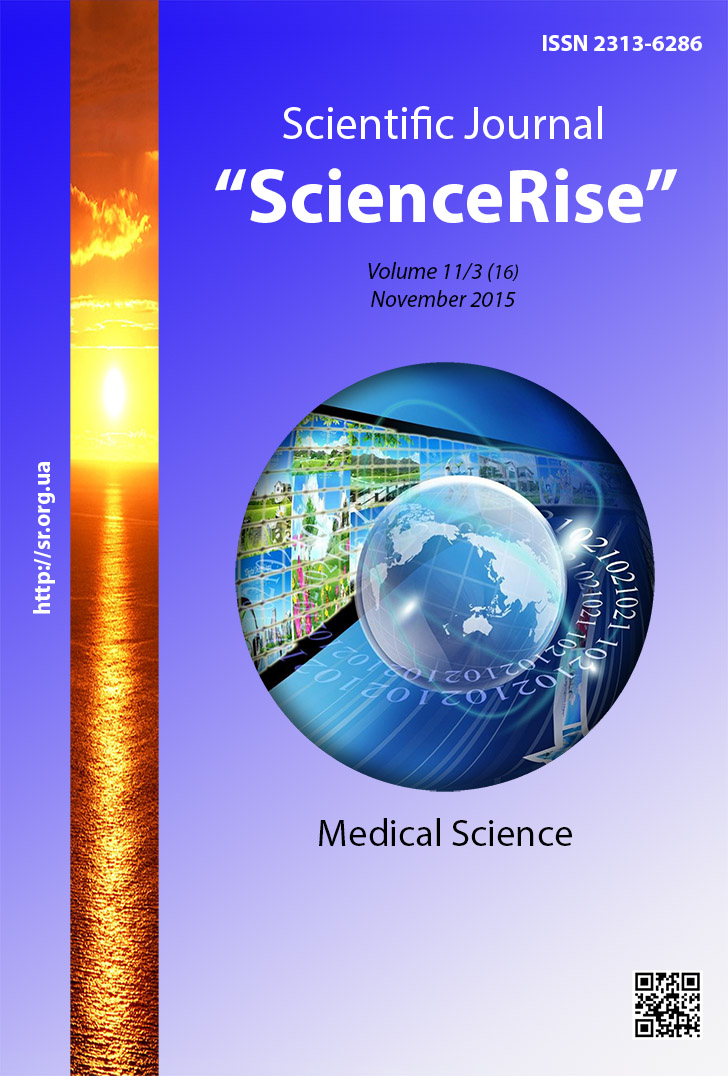Опікова енцефалопатія та синдром гіперметаболізму-гіперкатаболізму: чи є взаємозв’язок?
DOI:
https://doi.org/10.15587/2313-8416.2015.53871Ключові слова:
опікова травма, опікова енцефалопатія, кортизол, гіперглікемія, делірій, інсомнія, когнітивна дисфункціяАнотація
Опікова енцефалопатія є ускладненням тяжкої термічної травми. Значну роль у її розвитку відіграє синдром гіперметаболізму-гіперкатаболізму, який зумовлює порушення пам’яті, мислення, розлади у психоемоційній сфері, розвиток делірію та інсомнії. Ступінь розвитку синдрому гіперметаболізму-гіперкатаболізму залежить від тяжкості термічної травми. Своєчасне призначення додаткового парентерального харчування зменшую прояв синдрому гіперметаболізму-гіперкатаболізму
Посилання
Hrulev, S. E. (2009). Ozhogovaya travma s tserebralnyimi oslozhneniyami u vzroslyih i detey (klinika, mehanizmyi razvitiya, profilaktika) [Burn injury with cerebral complications in adults and children (clinic, pathogenesis, prevention)]. FGU «NNIITO». Noviy Novgorod, 34.
Finnerty, C. C., Mabvuure, N. T., Ali, A., Kozar, R. A., Herndon, D. N. (2013). The Surgically Induced Stress Response. Journal of Parenteral and Enteral Nutrition, 37 (5), 21S–29S. doi: 10.1177/0148607113496117
Selivanova, A. V. (2012). Gormonalno-metabolicheskie izmeneniya u bolnyih, nahodyaschihsya v kriticheskom sostoyanii [Hormonal and metabolic changes in patients who are in critical condition]. Klinicheskaya laboratornaya diagnostika, 11, 13–17.
Marik, P. E., Bellomo, R. (2013). Stress hyperglycemia: an essential survival response! Critical Care, 17 (2), 305. doi: 10.1186/cc12514
Kligunenko, E. N., Slinchenkov, V. V., Leschev, D. P., Prokopenko, A. N., Shevchenko, O. P., Bulanenko, E. V. (2002). Mesto perftorana v algoritme infuzionnoy terapii pervyih chasov ozhogovoy travmyi [The place of perftoran in the algorithm of infusion therapy in the first hours of burn injuries]. Aktualnyie problemyi termicheskoy travmyi. Sankt-Peterburg, 95–97.
Pileri, D., Accardo-Palumbo, A., D'Amelio, L., D'Arpa, N., Arnone, G., Grisaffi, C., Amico, M., Brancato, R., Lombardo, C., Conte1, F. (2009). Serum Levels of Cortisol, Immunoglobulin, and C-reactive Protein in Burn Patients. Annals of Burns and Fire Disasters, 22 (1), 3–5. Available at: http://www.ncbi.nlm.nih.gov/pmc/articles/PMC3188205/pdf/Ann-Burns-and-Fire-Disasters-22-3.pdf
Xiu, F., Stanojcic, M., Diao, L., Jeschke, M. G. (2014). Stress Hyperglycemia, Insulin Treatment, and Innate Immune Cells. International Journal of Endocrinology, 2014, 1–9. doi: 10.1155/2014/486403
Usenko, L. V., Muslin, V. P., Mosentsev, N. F., Mosentsev, N. N. (2013). Sposob nivelirovaniya stress-indutsirovannoy giperglikemii pri tyazhelyih kriticheskih sostoyaniyah [The method of leveling stress-induced hyperglycemia in severe critical illness]. Meditsina nevidkladnih staniv, 1 (48), 103–114.
Kligunenko, E. N., Sorokina, E. Yu., Kanyuka, G. S., Slinchenkov, V. V., Leschev, D. P., Mosenko, A. A. (2007). Tiotsetam – multiorgannyiy protektor u bolnyih so srednetyazhelyim i tyazhelyim techeniem ostrogo perioda ozhogovoy bolezni [Tiotsetam – the multiorgan protector in patients with moderately severe and severe acute period of burn disease]. Novosti meditsinyi i farmatsii v Ukraine, 8 (212), 10–12.
Sorokina, E. Yu., Buryak, T. A., Leschev, D. P. (2014). Ozhogovaya entsefalopatiya, kak proyavlenie organnoy disfunktsii pri tyazheloy termicheskoy travme [Burn encephalopathy, as a manifestation of organ dysfunction in severe thermal injury]. Vestnik neotlozhnoy i vosstanovitelnoy meditsinyi, 15 (1), 34–39.
##submission.downloads##
Опубліковано
Номер
Розділ
Ліцензія
Авторське право (c) 2015 Тетяна Олександрівна Буряк, Олена Юріївна Сорокіна, Евеліна Василівна Сотнікова, Ніна Іванівна Литвиненко

Ця робота ліцензується відповідно до Creative Commons Attribution 4.0 International License.
Наше видання використовує положення про авторські права Creative Commons CC BY для журналів відкритого доступу.
Автори, які публікуються у цьому журналі, погоджуються з наступними умовами:
1. Автори залишають за собою право на авторство своєї роботи та передають журналу право першої публікації цієї роботи на умовах ліцензії Creative Commons CC BY, котра дозволяє іншим особам вільно розповсюджувати опубліковану роботу з обов'язковим посиланням на авторів оригінальної роботи та першу публікацію роботи у цьому журналі.
2. Автори мають право укладати самостійні додаткові угоди щодо неексклюзивного розповсюдження роботи у тому вигляді, в якому вона була опублікована цим журналом (наприклад, розміщувати роботу в електронному сховищі установи або публікувати у складі монографії), за умови збереження посилання на першу публікацію роботи у цьому журналі.

